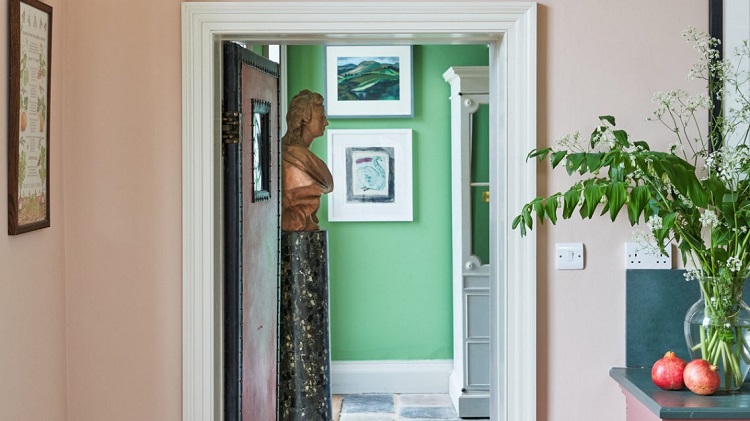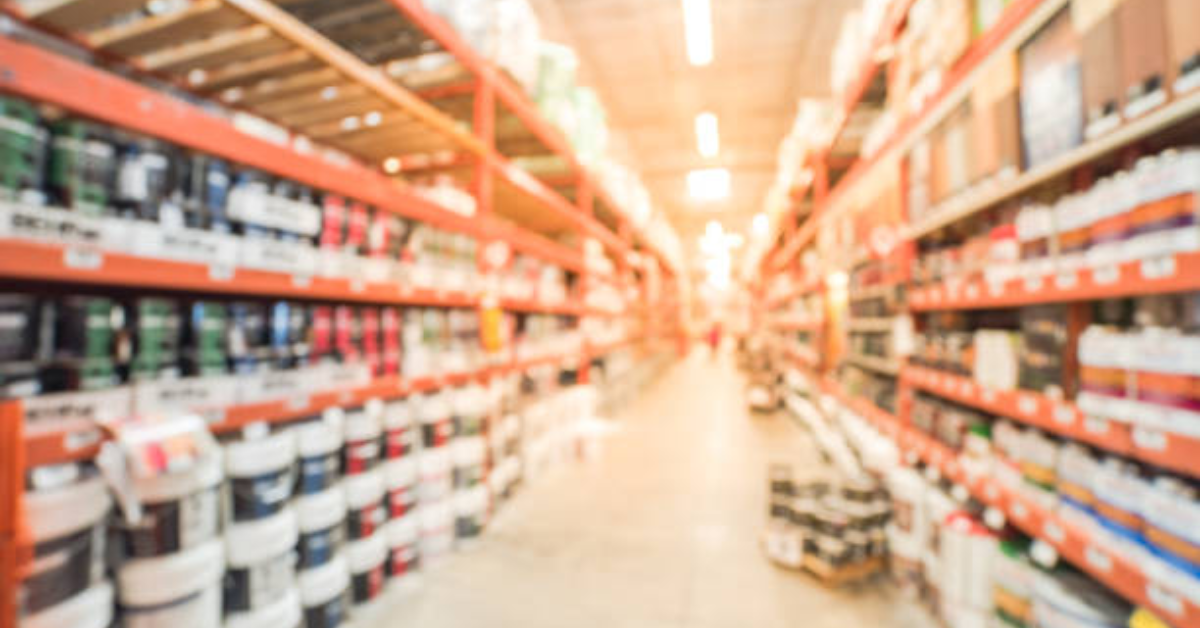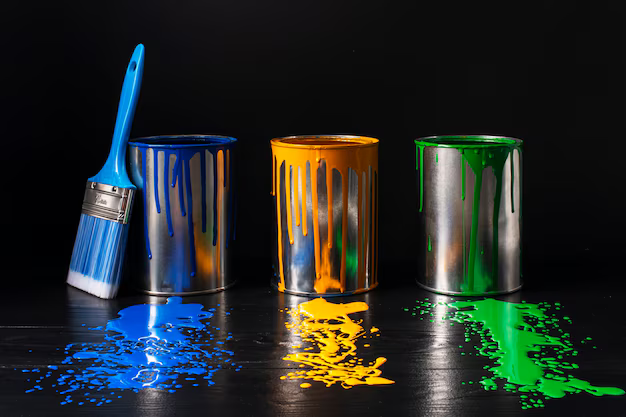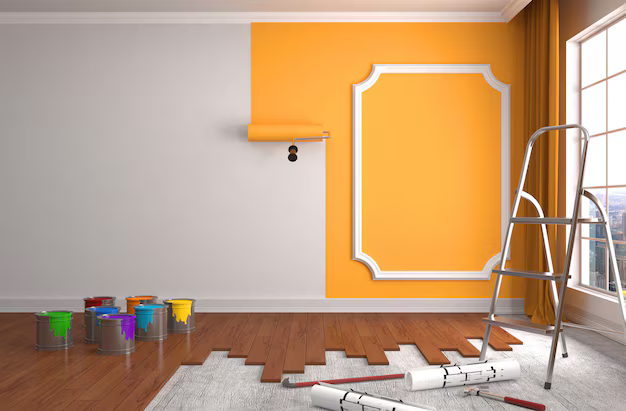The home owners in the UK are evenly focusing on eco-friendly solutions along with interior decor. A shift that is worthy of note is in the consumption of paints. Eco-friendly paints are materials that help to reduce the harm done to the environment as well as minimize exposure to harmful chemicals. Thus, at Nevis Paints we respect and follow your preferences and make it easier for you to make long-term decisions without renouncing style or quality. In this article, we look at the best eco-friendly paint alternatives in the UK.
Why Use Eco Paint?
There are countless benefits for your home and for the world that come with using non-toxic paints. For sure, the following suggestions are worth considereing.
Low VOCs:
VOC stands for volatile organic compounds which evaporates and leads to some respiratory issues among others. With the use of eco-friendly paints, these concerns are dismissed as such paints have zero or low amount of VOC.
Sustainable Ingredients:
Many companies nowadays make these eco paints from plant based materials, clay, and even lime, in order to reduce the use of unnatural resources.
Biodegradable:
Such types of paints do not cause any harm to the environment as they decompose completely.
Odour-Free:
This featuer is a definite plus since painting processes are rarely pleasant, unless you select eco-friendly paints that do not smell, as opposed to common paint that has a strong and overwhelming odour.
Types of Eco-Friendly Paint
There are a wide variety of eco-friendly paints available, depending on various needs and preferences. A few of the most common varieties are:
1. Natural Paints
Clay, lime, casein, and other natural oils are used in place of synthetic chemicals to create natural paints. When the goal is to achieve an earthy appeal, these paints are perfect. Due to the absence of chemical elements, these paints are perfect for homes with antique-style architecture.
2. Low-VOC and Zero-VOC Paints
These formulations of paints serve the specific purpose of enhancing the quality of air by limiting the emission of toxic elements. These options are widely available and suitable for all interior as well as exterior applications. These are ideal for areas that require durability and excellent coverage.
3. Recycled Paints
Instead of discarding leftover paint, one can recycle it and create what is called recycled paints. Reusing paint not only minimizes pollution but it is a cost effective solution as well as provides excellent versatility since a wide variety of options are available, each with a different colour and finish.
4. Water-Based Paints
Water-based paints are more environmentally friendly as they are dissolved in water rather than chemicals. They are non-toxic, high-performance, fast-drying, and also easy to clean. Because of these features, these paints are suitable for children or pets.
How to Choose the Right Eco-Friendly Paint
However, there are many factors to take into account when choosing an eco-friendly paint for your home.
In this regard, UK homeowners are becoming more aware of such issues as environmental protection and strive for eco-friendly interiors. Such changes are noticeably evident in the choice of paints. Eco-friendly paints reduce the damage caused to the ecosystem and provide cleaner air within buildings by lowering concentration of toxic chemicals used. Nevis Paints partnerships with you to achieve sustainability with no compromise on fashion and style. Let’s find out what are the best eco-friendly paint solutions for UK houses.
Why Go Green With Paints?
Transforming a house and the earth for that matter would require using eco-friendly paints and here’s why making the switch will certainly be a great decision.
- Minimal Volatile Organic Compound (VOC) Content: These are evaporative organic compounds and are known to be noxious to the air, therefore any exposure can lead to critical respiratory problems and other health-related issues. Eco paints emphasize zero or indeed, minimal levels of VOC so as to enhance air quality.
- Renewable Resources: These contain a much lower proportion of synthetic chemicals so as to use natural products like clay, plant oils, and limestone, which are much more environment friendly.
- Biodegradable: Biodegradable materials can be described as materials that can decompose but do not contribute any harmful effects to the environment, and luckily many eco-friendly paints fall under this category.
- Non Toxic: The most overbearing factor when it comes to painting are the fumes and strong odours that are left after. Eco-paints instead are mild or in many instances non-odorous which forms the whole new experience of painting house interior.
- Energy Effective: Certain eco-paints increase energy effectiveness by insulating or reflecting heat thus making the use of energy in the house lower.
Variants of Eco-Friendly Paint
There are a no. of choices available on green paints, along with a number of combinations. You can select the type according to your requirement. Here are few options you might find useful:
1. Natural Paints
Naturally sourced paints, as the name suggests, are made up of clay, lime, casein, and oils. With them being 100% natural, one can be sure to get clean earthy tones. Due to the nature of these paints, they are mostly employed in houses that are historic or are trying to achieve a natural look.
2. Low-VOC and Zero-VOC Paints
The green ideology does not only revolve around low or no emissions, it should extend to occupancy as well. All in all, such paints cater to a larger mass and allow for an aesthetic touch while providing all the functioning of a normal paint. Be it regarding touch-ups or moving entirely new, zero or low chemical paints do the job.
3. Recycled Paints
Recycled paints speak for themselves, but more importantly, they reduce wastage while giving old paints a second chance. While providing a range of colours and finishes, they perform the basic job of covering walls along with being sustainable and good for the environment.
4. Water-Based Paints
Water paints are the perfect option for those who are surrounded by pets or kids. Also considering how they have a subtler odor, dry instantly, are easy to clean or apply while completely avoiding the use of chemicals, one can say they are indeed the perfect alternative.
How to Choose an Eco-Friendly Paint
If you want an eco-friendly type of paint for your house, you will have to consider a couple of things to narrow down your options:
1. Room Usage
Every room has a specific purpose. For example, a bathroom or kitchen might need moisture-resistant paint, while a living room can benefit from more colorful matte finishes or even a satin finish.
2. Colour Selection
Even eco-friendly paints are available in different and many colors. Selecting the right colours which match your decor will help you be able to set the right mood in the room.
3. Resistance
If necessary, check that the paint you use is appropriate for high traffic areas and is durable. Modern eco-friendly paints are being made as strong as other types.
4. Certifications
EU Ecolabel, Greenguard or any other certifications will signify the fulfillment of specific environmental protection and safety requirements, and best of all, it will do so to a high standard.
Eco-Friendly Paint in Various Environment
Living Rooms
Living rooms will need this type of paint in some relaxing mode colors such as light grey or a warm cream and a dash of muted greens. To ensure a sophisticated and comfortable feel, low-VOC paints with eggshell finishes and matte finishes should be used.
Bedrooms
When decorating bedrooms, use soft colors such as pastel tones or neutral tones. Zero-VOC paints are best suited to bedrooms as they promote healthy sleep.
Preparation
When painting or decorating the interiors of kitchens and bathrooms, always choose satin or semi-gloss paints because they are resistant to water and moisture. They also have quality durability and are easy to maintain.
When working with children’s rooms, you can choose natural or non VOC paints since they are safe for use with little kids and come in fun colored variants.
Green Tips for Your Home Painting
- Be Appropriately Prepped: Adequate prep work on the surfaces ensures that there is less requirement for a rep coat and therefore saves on the amount of paint used and thrown away as waste.
- Having an Appropriate Set of Tools: The investment in good rollers and brushes pays off with a good and minimal cover quality finish on the painting.
- Save the Paint: Rather than throwing it away, keep the extra paint in case it is required for touch-up jobs.
- Rightly Dispose of the Paint: Unused or unsalvageable paint limits the capacity of the empty cans, always depositing them at municipal recycling sites.
- Nevis II Paint: Express Yourself and Inspire Others
Browse our range today and see how making smart, sustainable choices for your home doesn’t have to be difficult. Nevis Paints helps you to achieve your desired results while assuring that your harmful environmental conscience remains intact.
But to look at eco-friendly paints and eco-friendly coatings simply as one of the environmental protection trends would be a great mistake. Its selection would not only improve the environment but also beautify the home. The experience and the products from Nevis Paints ensure that the look of your house is appealing and green. Pursue the sustainable way of living with Nevis Paints and accomplish your vision at the very onset.






